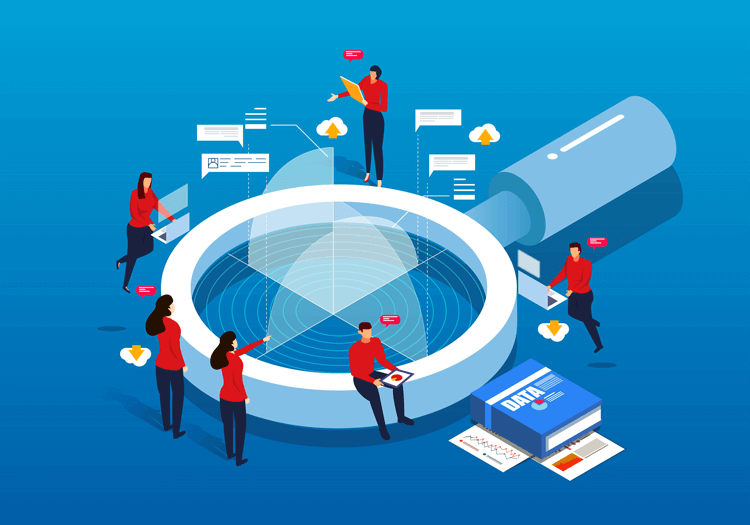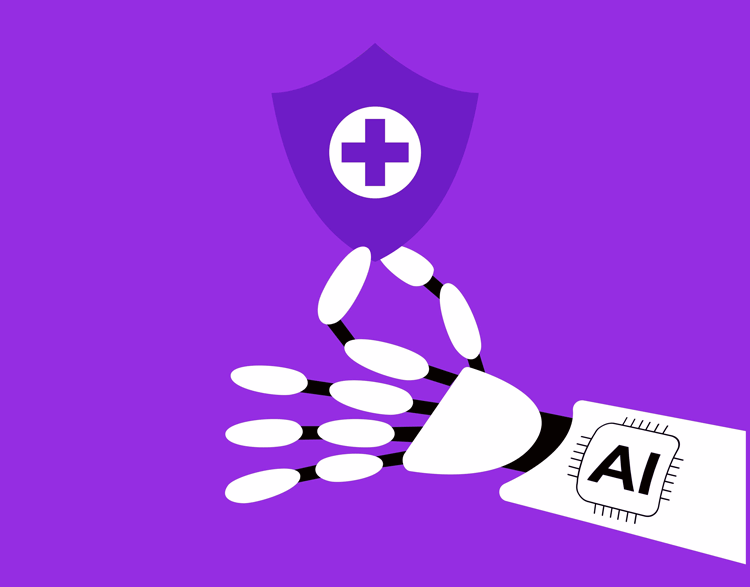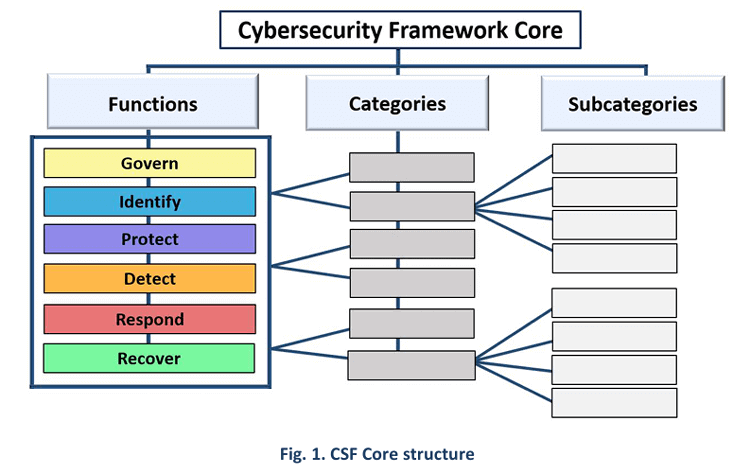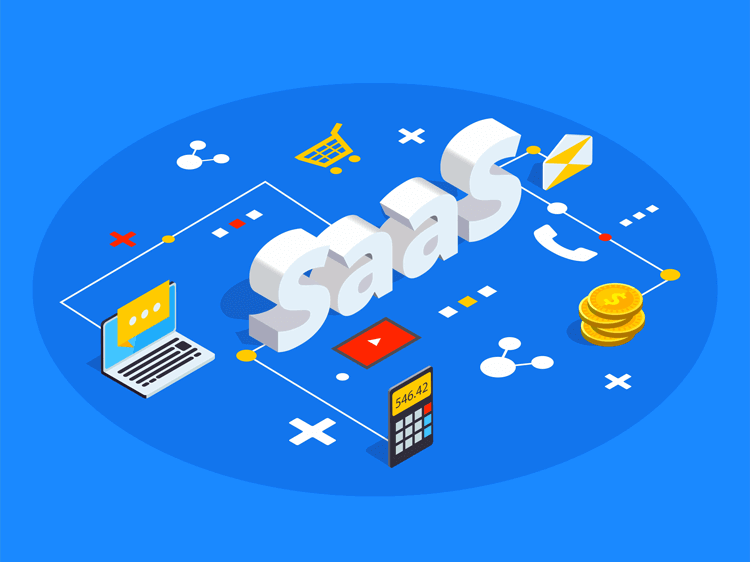IT Strategy Examples: A Comprehensive Guide with Real-Life Cases and How To's
A well-defined IT strategy is critical for business success today. Companies that align their IT strategy with their overall goals tend to outperform competitors in areas like innovation, efficiency, and customer satisfaction. According to Deloitte, organizations with higher digital maturity are three times more likely to excel in key metrics like operational efficiency and revenue growth.
In this post, we'll break down what an IT strategy is and the different types available. We will also share real-world IT strategy examples of companies that have used them to reach their goals.

What is an IT Strategy?
An IT strategy is a carefully formulated plan that details aligning technology with a company's business goals. It ensures that technology projects contribute to broader objectives like improving efficiency, enhancing customer experiences, or driving revenue growth. Some example projects include:
- Software development
- Data management
- Cybersecurity
- Cloud adoption
With a clear IT strategy, businesses can maximize their technology investments, prioritize critical projects, and stay agile.
Common Types of IT Strategies
Below are some of the most common types of IT strategies that businesses adopt to achieve their objectives:
-
Infrastructure Management Strategy
Focuses on optimizing and maintaining a company's IT infrastructure. To guarantee efficiency, security, and scalability, this usually involves:
- Upgrading hardware
- Managing networks
- Adopting cloud or hybrid environments
-
Cybersecurity Strategy
A strategy designed to protect a company's digital assets and sensitive data. To help mitigate the risk of data breaches and cyberattacks, this involves implementing security measures such as:
- Firewalls
- Encryption
- Regular threat assessments
-
Cloud Strategy
Involves the migration of IT resources and services to the cloud, enabling businesses to scale resources on-demand and reduce costs. For business needs of flexibility, cost-efficiency, and remote work capabilities, this strategy includes decisions about:
- Public environments
- Private environments
- Hybrid cloud environments
-
IT Service Management (ITSM) Strategy
Focuses on the delivery and support of IT services within the organization. This strategy emphasizes establishing processes and best practices for:
- Handling incidents
- Managing service requests
- Maintaining service quality
Give it a try: Consider using Giva's IT Service Management Software in the Cloud, designed to help organizations seamlessly manage IT service requests with:
- Built-in scalability
- Powerful reporting
- Real-time analytics
Giva's solution not only supports IT teams but also enables them to respond faster, streamline workflows, and improve service delivery, all while keeping costs down. Start a free trial!
-
Data Governance and Management Strategy
This strategy makes sure a company's data is accurate, secure, and used effectively. To help organizations make informed decisions based on reliable data while maintaining compliance with data protection regulations, this involves policies and tools for managing data:
- Quality
- Access
- Analytics
-
Digital Transformation Strategy
An encompassing approach to integrating digital technologies into all business processes. To enhance efficiency, drive innovation, and improve customer experiences, this can include:
- Implementing AI solutions
- Adding automation
- Providing analytics solutions
-
Business Continuity and Disaster Recovery (BC/DR) Strategy
Focuses on preparing for and responding to unexpected IT disruptions. It includes developing action plans such as Business Continuity or Disaster Recovery to ensure business operations can continue or quickly resume after incidents like:
- System failures
- Cyberattacks
- Natural disasters
Watch Our Comprehensive Guide to IT Strategy Video
7 Excellent Real-Life IT Strategy Examples
-
Mayo Clinic (Healthcare Industry)
Business Goal: Improve data privacy and security while enabling advanced AI research using patient data.
Strategy: Mayo Clinic partnered with Google to build a secure cloud infrastructure, including the Mayo Clinic Cloud and Mayo Clinic Platform.
The Mayo Clinic Platform allows researchers to access de-identified clinical data within a secure environment to develop AI systems, while ensuring that patient data never leaves Mayo Clinic's control. This approach, known as "data under glass," enables collaboration with external researchers without compromising data privacy or security.
By keeping the data securely within Mayo's system and allowing algorithms to analyze it without moving the data, Mayo Clinic supports advanced medical research and AI development while maintaining strict privacy standards.
Read the Full Case Study: Mayo Clinic's Data Privacy and AI Partnership with Google
-
Capital One (Financial Services Industry)
Business Goal: Transform into a cloud-first organization to enhance agility, scalability, and customer experience while reducing operational costs.
Strategy: In its cloud migration journey, Capital One worked with Amazon Web Services (AWS) to become a fully cloud-first company.
Over the course of its 8-year transformation, Capital One closed its on-premises data centers, recycled 103 tons of copper and steel, and built 80% of its nearly 2,000 cloud applications from the ground up. The migration allowed Capital One to scale its operations, provide real-time personalized customer experiences, and innovate rapidly using big data and machine learning.
AWS's cloud services--like Amazon EC2, Amazon S3, and Amazon RDS--enabled Capital One to manage data at a larger scale, reduce infrastructure management costs, and focus on customer-centric innovation.
Capital One also trained 11,000 tech associates to work in this new cloud environment, leveraging AWS workshops and certifications.
This strategy allowed Capital One to operate more like a tech company while continuing to disrupt the traditional banking model.
Read the Full Case Study: AWS case study on Capital One
-
Walmart (Retail Industry)
Business Goal: Improve supply chain efficiency and increase transparency while managing risks in procurement and logistics.
Strategy: Walmart has faced a range of supply chain challenges, including changing trade policies, environmental disruptions, and shifting consumer demand for sustainable products.
To tackle these issues, Walmart has implemented blockchain technology to improve the traceability and transparency of its procurement processes. The digital ledger keeps transactions secure and transparent, improving accountability and ensuring suppliers meet ethical standards. By tracking goods through real-time digital tokens, Walmart reduces losses and improves supplier collaboration.
In addition to blockchain, Walmart integrates AI-powered predictive analytics to forecast demand and optimize logistics. This allows the company to adjust inventory levels in real-time, ensuring timely deliveries while minimizing costs.
AI also plays a key role in supplier evaluation, helping Walmart select partners that align with its sustainability and operational goals.
Blockchain and AI help Walmart stay flexible during economic and political changes, keeping its global supply chain running smoothly.
Read the Full Case Study: Walmart's Strategic Integration of Blockchain and AI
-
Starbucks (Food and Beverage Industry)
Business Goal: Enhance customer experience through AI-driven personalization and digital innovation.
Strategy: Starbucks leverages AI through its Deep Brew platform to analyze customer data from its mobile app and loyalty program, offering personalized recommendations and promotions. This tailored approach drives customer engagement and increases sales by anticipating customer preferences.
Additionally, AI helps automate tasks such as inventory management and equipment maintenance, which improves operational efficiency and allows employees to focus more on delivering excellent customer service than other tedious tasks.
Starbucks has also incorporated mobile ordering and payment options into its operations, improving convenience for customers and contributing to a more seamless experience.
This digital transformation has positioned Starbucks as a leader in both customer engagement and operational efficiency.
Read the Full Case Study: Starbucks Revolutionizes the Coffee Experience with AI
-
Nike (Apparel Industry)
Business Goal: Enhance customer experience, optimize supply chain efficiency, and modernize IT operations using automation.
Strategy: Nike has taken a comprehensive approach to AI integration across its operations, focusing on customer engagement, supply chain management, and IT infrastructure.
To improve the customer experience, Nike uses AI-powered apps that provide hyper-accurate shoe fitting and personalized product recommendations. This is achieved through advanced data analytics, a capability made possible by Nike's acquisition of Zodiac, a customer analytics firm. Nike also leverages augmented reality (AR) in its apps for shoe fitting, helping customers find the perfect fit.
On the supply chain side, AI and machine learning help predict product demand and strategically position popular items in regional distribution centers, reducing lead times.
Read the Full Case Study: How Nike Leverages AI Across Operations
-
Saint Elizabeth Health Care (Healthcare Industry)
Business Goal: Reduce IT costs and improve productivity in managing healthcare services across multiple offices.
Strategy: Saint Elizabeth Health Care partnered with Giva to implement a cloud-based IT service management solution.
This transition reduced their total cost of ownership by 50% and boosted productivity by 40%, allowing them to handle internal IT requests more efficiently.
The platform's automation features helped manage hardware and software across 25 locations, significantly improving service delivery.
Read the Full Case Study: Saint Elizabeth Health Care's IT Transformation
-
Casio Computer (Electronics Industry)
Business Goal: Improve customer service efficiency and enhance real-time reporting capabilities for its global call centers.
Strategy: Casio adopted Giva's cloud-based Customer Service Software to overhaul its call center operations.
Giva's solution offered significant improvements in reporting, ease of use, and overall value compared to other systems evaluated.
One of the critical features Casio leveraged was the ability to monitor key customer service metrics in real-time, without the need for custom coding or additional software. This allowed agents and management to track progress hour-by-hour, improving response times and customer satisfaction.
Giva's cloud-based system enabled 100% uptime, which was imperative for Casio's global operations, ensuring seamless service across multiple regions.
Additionally, the platform allowed Tokyo headquarters to access and review customer service reports from the U.S. and Canadian call centers at any time.
The flexibility of Giva's system also allowed Casio to scale as their call center needs grew, with the ability to easily configure and make changes without additional programming.
Read the Full Case Study: Casio's IT Transformation
Key Considerations for Building an Effective IT Strategy
Building an effective IT strategy requires careful planning, alignment with business goals, and a focus on flexibility to adapt to evolving technologies. Here are some key considerations to keep in mind:
-
Align IT Strategy with Business Objectives
Make sure your IT strategy is directly tied to the company's overall business goals. The IT strategy must serve the broader organizational objectives. This is whether the focus is on scaling operations, enhancing customer experience, or improving cybersecurity.
Technology initiatives are kept aligned with the company's vision and future growth plans when communication between IT leadership and other business units is well established.
-
Prioritize Security and Risk Management
With increasing cyber threats, it's critical to prioritize cybersecurity in your IT strategy. This includes implementing robust data protection policies, adopting encryption, and conducting regular security audits.
Additionally, a solid risk management plan ensures that the organization can respond quickly to unforeseen disruptions like data breaches or system failures.
-
Invest in Scalable Infrastructure
As your company grows, so will its IT needs. Implement scalable infrastructure, such as cloud-based services, so your systems can adapt to future demands. Cloud solutions provide flexibility, allowing companies to scale up or down as necessary, without the need for significant upfront investments in hardware.
-
Incorporate Emerging Technologies
Stay ahead by integrating emerging technologies like AI, machine learning, and IoT where appropriate. These technologies can help automate tasks and improve decision-making, among other things. However, it's important to assess the business case for each technology to make sure it truly adds value.
-
Promote Cross-Department Collaboration
An effective IT strategy isn't just an IT responsibility. It requires collaboration between departments like operations, marketing, and finance to help technology serve all parts of the business. Engaging with other departments makes this strategy comprehensive and supports the needs of different teams.
-
Focus on Data Management and Analytics
With data now being one of the most valuable assets, it's essential to have a strong data management plan in place. This involves ensuring data accuracy, compliance with data protection regulations, and investing in analytics tools to derive actionable insights from data.
The use of advanced analytics and AI can help businesses anticipate trends and make better informed decisions.
-
Regularly Review and Update the Strategy
Technology is constantly evolving, and so should your IT strategy.
Regular reviews keep the strategy aligned with changing business goals, technological advancements, and external factors such as regulatory requirements.
Set a timeline for periodic strategy updates, and incorporate feedback from stakeholders at all levels of the organization.
Read more: Service Desk Automation: 15 Innovations Plus Best Practices and Challenges with Solutions
The Bottom Line: IT Strategies Drive Growth, Security, and Innovation
A good IT strategy helps connect technology with business goals, making companies more efficient and competitive. By using tools like cloud services, AI, and data management, businesses can improve operations while boosting growth and innovation.
Whether it's enhancing customer experience or protecting data, the right IT strategy helps businesses succeed in a fast-changing digital world.
Giva Can Be Your IT Service Management Strategies Partner
Giva's ITIL-aligned ITSM software can help give your teams the streamlined systems they need to provide your customers with the best support.
Features include:
- Get up and running quickly with Service Desk Management and then seamlessly integrate with:
- Service Level Management
- Incident Management
- Problem Management
- Knowledge Management
- Change Management
- Benefit from real-time custom reporting and KPIs, with full color charts and graphs, which you can customize, save, share and schedule for automatic delivery
- Harness the power of Giva's AI Copilot to effortlessly refine responses and quickly access and format solution information, empowering agents to address customer issues with accuracy and efficiency
- Automatically open service requests on a scheduled and recurring basis, including automated escalation and closure of incidents and service requests
See how Giva can help you align your IT service desk strategies with your business needs. Book a free Giva demo to see our solutions in action, or start your own free, 30-day trial today!





